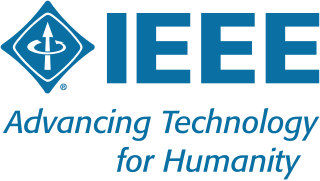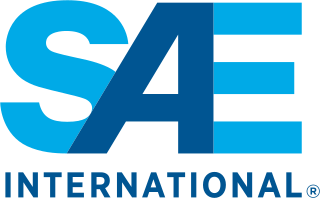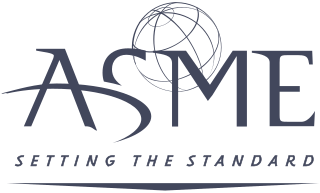Related Research Articles

The Institute of Electrical and Electronics Engineers (IEEE) is an American 501(c)(3) professional association for electronics engineering, electrical engineering, and other related disciplines.

SAE International is a global professional association and standards organization based in Warrendale, Pennsylvania, United States. Formerly the Society of Automotive Engineers, the organization adopted its current name in 2006 to reflect both its international membership and the increased scope of its activities beyond automotive engineering and the automotive industry to include aerospace and other transport industries, as well as commercial vehicles including autonomous vehicles such as self-driving cars, trucks, surface vessels, drones, and related technologies.

The American Society of Mechanical Engineers (ASME) is an American professional association that, in its own words, "promotes the art, science, and practice of multidisciplinary engineering and allied sciences around the globe" via "continuing education, training and professional development, codes and standards, research, conferences and publications, government relations, and other forms of outreach." ASME is thus an engineering society, a standards organization, a research and development organization, an advocacy organization, a provider of training and education, and a nonprofit organization. Founded as an engineering society focused on mechanical engineering in North America, ASME is today multidisciplinary and global.

The American Society of Agricultural and Biological Engineers (ASABE) is an international professional society devoted to agricultural and biological engineering. It was founded in December 1907 at the University of Wisconsin–Madison as the American Society of Agricultural Engineers (ASAE) and is now based in St. Joseph, Michigan. Today the organization has about 9,000 members in over 100 countries. ASABE serves many functions: it provides a forum for communication of research findings through conferences, scientific journals, and a magazine; it develops standards of practice; it provides opportunities for members to network. It cooperates with the Alpha Epsilon honor society.
The Society of Hispanic Professional Engineers (SHPE) was founded in Los Angeles, California in 1974 by a group of engineers employed by the city of Los Angeles. Their objective was to form a National organization of professional engineers to serve as role models in the Latino community.
The Audio Engineering Society (AES) is a professional body for engineers, scientists, other individuals with an interest or involvement in the professional audio industry. The membership largely comprises engineers developing devices or products for audio, and persons working in audio content production. It also includes acousticians, audiologists, academics, and those in other disciplines related to audio. The AES is the only worldwide professional society devoted exclusively to audio technology.

The Society of Petroleum Engineers (SPE) is a 501(c)(3) not-for-profit professional organization.
The Society of Plastics Engineers (SPE) is a global professional membership organization dedicated to the advancement of knowledge and education for professionals employed in the plastics industry.

The Institution of Engineering and Technology (IET) is a multidisciplinary professional engineering institution. The IET was formed in 2006 from two separate institutions: the Institution of Electrical Engineers (IEE), dating back to 1871, and the Institution of Incorporated Engineers (IIE) dating back to 1884. Its worldwide membership is currently in excess of 158,000 in 153 countries. The IET's main offices are in Savoy Place in London, England, and at Michael Faraday House in Stevenage, England.

The Society of Women Engineers (SWE) is an international not-for-profit educational and service organization. Founded in 1950 and headquartered in the United States, the Society of Women Engineers is a major advocate for women in engineering and technology. SWE has over 40,000 members in nearly 100 professional sections, 300 collegiate sections, and 60 global affiliate groups throughout the world.
The American Institute of Chemical Engineers (AIChE) is a professional organization for chemical engineers. AIChE was established in 1908 to distinguish chemical engineers as professionals independent of chemists and mechanical engineers.
The National Academy of Engineering (NAE) is an American nonprofit, non-governmental organization. The National Academy of Engineering is part of the National Academies of Sciences, Engineering, and Medicine, along with the National Academy of Sciences (NAS), the National Academy of Medicine, and the National Research Council.

The Institute of Marine Engineering, Science and Technology (IMarEST) is the international membership body and learned society for marine professionals operating in the spheres of marine engineering, science, or technology. It has registered charity status in the UK. It has a worldwide membership of over 12,000 individuals based in over 128 countries. The Institute is a member of the UK Science Council and a licensed body of the Engineering Council UK.
The American Engineers' Council for Professional Development or simply the Engineers' Council for Professional Development (ECPD), established in June 1932, was an engineering professional body dedicated to the education, accreditation, regulation and professional development of the engineering professionals and students in the United States. ECPD grew and has changed its name to ABET, Inc. and its focus solely to accreditation.

The Society of American Military Engineers (SAME) unites public and private sector individuals and organizations from across the architecture, engineering, construction, environmental, facility management, contracting and acquisition fields and related disciplines in support of the United States' national security.
The Materials Research Society (MRS) is a non-profit, professional organization for materials researchers, scientists and engineers. Established in 1973, MRS is a member-driven organization of approximately 13,000 materials researchers from academia, industry and government.
The IEEE Systems, Man, and Cybernetics Society is a professional society of the IEEE. It aims "to serve the interests of its members and the community at large by promoting the theory, practice, and interdisciplinary aspects of systems science and engineering, human-machine systems, and cybernetics".
The Penn State College of Engineering is the engineering school of the Pennsylvania State University, headquartered at the University Park campus in University Park, Pennsylvania. It was established in 1896, under the leadership of George W. Atherton. Today, with 13 academic departments and degree programs, over 11,000 enrolled undergraduate and graduate students, and research expenditures of $124 million for the 2016-2017 academic year, the Penn State College of Engineering is in the top 20 of engineering schools in the United States. It is estimated that at least one out of every fifty engineers in the United States got their bachelor's degree from Penn State. Dr. Justin Schwartz currently holds the position of Harold and Inge Marcus Dean of Engineering.

The Institute of Industrial and Systems Engineers (IISE), formerly the Institute of Industrial Engineers, is a professional society dedicated solely to the support of the industrial engineering profession and individuals involved with improving quality and productivity.

The Wisconsin Engineer is a student-run magazine and registered non-profit 401(C)3 corporation. The staff, all volunteers, are students at the University of Wisconsin-Madison. The magazine covers topics in modern science and engineering, with a particular focus on University of Wisconsin–Madison faculty research and student achievements. Most articles are written to be mainly informative, yet the magazine occasionally publishes opinion articles and satire articles related to engineering topics or controversies centered around the University of Wisconsin-Madison. The Wisconsin Engineer is published four times a year seasonally and distributed in print across the University of Wisconsin-Madison campus. The magazine offers paid subscriptions and, more recently, posts the full content of articles on their website. The Magazine has remained relatively local in its coverage, allowing it to foster relationships with professional organizations such as the Wisconsin Society of Professional Engineers.